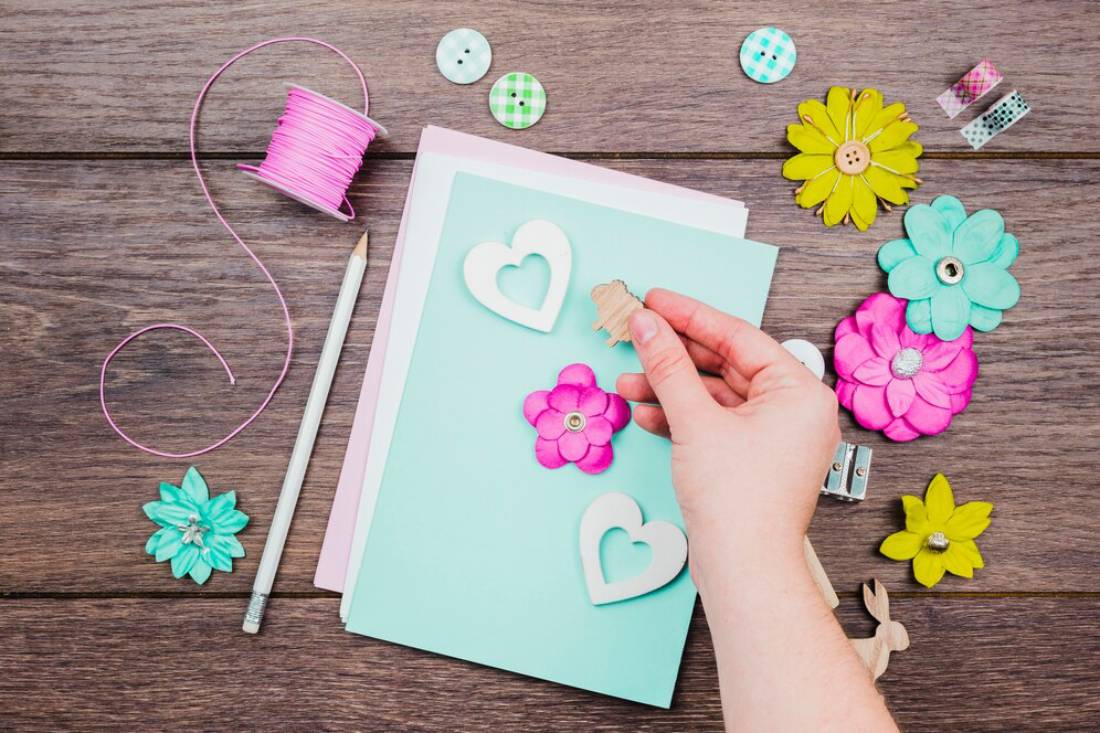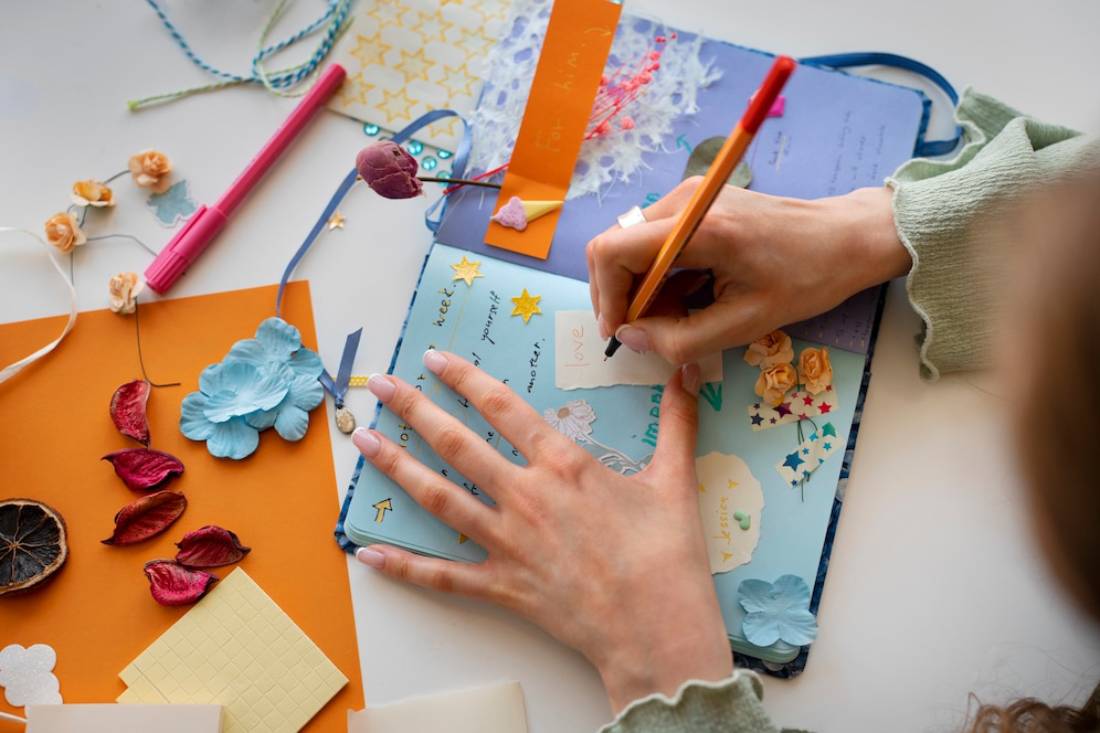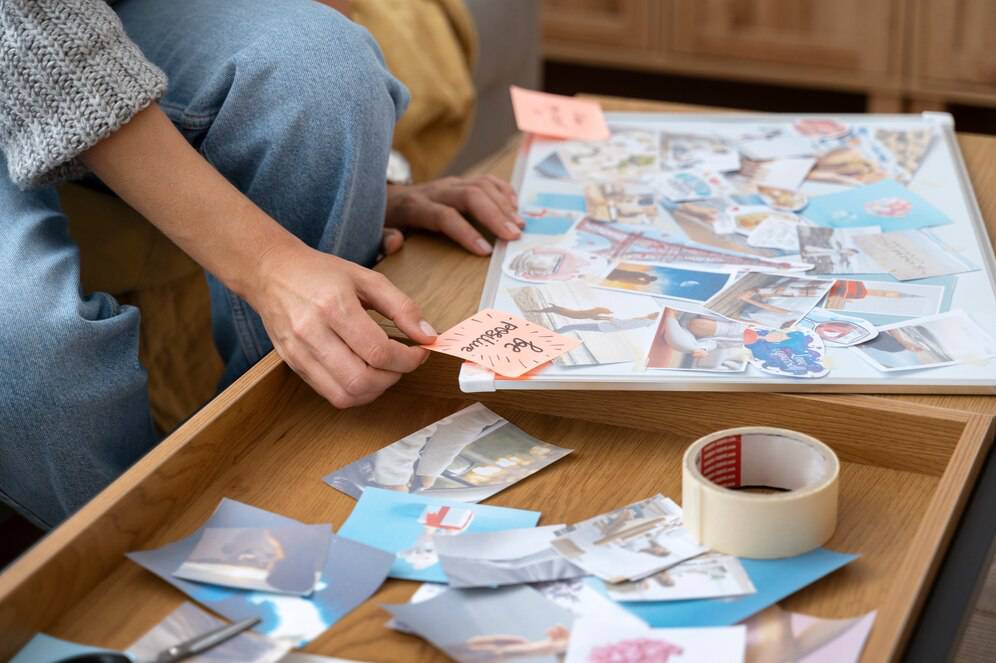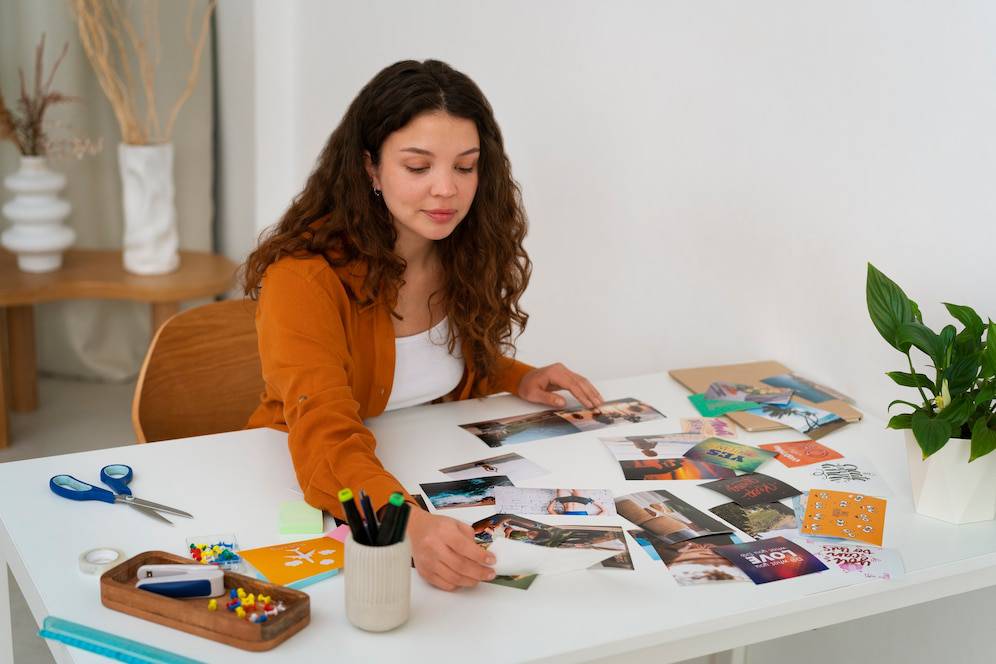
Scrapbooking for Beginners: A Complete Guide
In an era where memories often live in the cloud, scrapbooking shines bright. It weaves a tapestry of creativity with a personal flair for preserving life’s treasures. Whether you’re immortalising family milestones, globetrotting escapades, or personal triumphs, a DIY memory book offers a canvas for storytelling. Each page transforms photos into narratives, and embellishments breathe life into your cherished moments. Thoughtful layouts invite you to relive your journey, making your memories not just stored but truly celebrated.
If you’re new to scrapbooking, you might be wondering how to start scrapbooking or what materials you’ll need. This beginner-friendly guide will walk you through the essentials, offering scrapbooking tips and inspiration to help you create a meaningful and visually stunning scrapbook.
Getting Started with Scrapbooking

What is Scrapbooking?
Scrapbooking creatively documents memories using photographs, decorative papers, stickers, embellishments, and handwritten notes. Unlike a traditional photo album, a scrapbook allows storytelling, customisation, and artistic expression.
Essential Scrapbooking Supplies
Before you begin, gather the essential materials to start your DIY memory book:
- Scrapbook Album – Choose between a pre-bound book or a binder with removable pages.
- Cardstock & Patterned Paper – Used as backgrounds and layers to enhance your pages.
- Adhesives – Glue sticks, double-sided tape, or glue dots for securing elements.
- Scissors & Craft Knife – Essential for cutting papers and embellishments.
- Photos – Printed images that form the centrepiece of your scrapbook.
- Pens & Markers – Writing captions, journaling, and adding personal notes.
- Stickers & Embellishments – Washi tape, buttons, ribbons, and die-cuts add extra flair.
Planning Your Scrapbook

Choosing a Theme
Before assembling pages, decide on a theme that will guide your design and layout choices. Popular scrapbook themes include:
- Family Memories – Chronicle special family moments and holidays.
- Travel Adventures – Document trips with maps, tickets, and travel photos.
- Wedding Album – Capture the big day with elegant and romantic designs.
- Baby’s First Year – Highlight milestones with adorable embellishments.
- Seasonal Scrapbooks – Showcase holidays like Christmas, Halloween, or summer vacations.
Organising Your Materials
To avoid clutter and make the process enjoyable, organise your scrapbooking supplies:
- Use storage boxes or drawers to categorise paper, embellishments, and tools.
- Arrange photos chronologically or by event before starting.
- Keep a sketchbook or digital mood board for layout ideas and inspiration.
Scrapbooking Techniques for Beginners

1. Layering for Depth
Layering involves stacking papers, images, and decorations to add depth and visual interest. How to do it:
- Choose a base cardstock or patterned paper.
- Add a slightly smaller photo mat (a solid-coloured paper under your photo).
- Layer embellishments like tags, washi tape, or lace for dimension.
2. Journaling & Captions
Adding written notes personalises your scrapbook, making it more meaningful. Ideas for Journaling:
- Write a short memory or anecdote related to the photo.
- Include quotes, song lyrics, or handwritten letters.
- Use pre-made journaling cards for a structured look.
3. Using Die-Cuts & Stamps
Die-cuts and rubber stamps add a professional touch to scrapbook pages. How to use them:
- Choose stamps that complement your theme (e.g., travel stamps for vacation scrapbooks).
- Layer die-cut shapes behind or around your photos for extra detail.
4. Interactive Elements
Adding flaps, pockets, and pop-ups can make your scrapbook more engaging. Ideas:
- Hidden journaling – Create small envelopes or tags to tuck away personal notes.
- Fold-out pages – Allow for more photos and writing without cluttering a page.
- Shaker pockets – Use a clear plastic pouch filled with sequins for a fun effect.
Scrapbooking Layout Ideas
If you’re unsure how to design your pages, here are some easy-to-follow layouts:
Simple Grid Layout
- Arrange photos in a clean grid format.
- Use equal spacing between each element for a balanced look.
- Add small captions beneath each image.
Collage Style
- Overlap photos and embellishments in an organic, unstructured way.
- Use torn paper edges for a vintage aesthetic.
- Mix different textures like lace, fabric, and buttons.
Minimalist Design
- Use a single focal photo with minimal decorations.
- Stick to a neutral colour palette.
- Allow for ample white space to keep the design clean and modern.
Scrapbooking Tips for Beginners
- Start small – Begin with a mini scrapbook or a few pages before tackling a large project.
- Use templates – Printable layout templates can help with page organisation.
- Mix textures – Combine glossy, matte, and textured papers for added interest.
- Don’t be afraid to experiment – Try new techniques like watercolour backgrounds or calligraphy.
- Keep it personal – The best scrapbooks reflect your personality and emotions.
Common Scrapbooking Mistakes to Avoid
- Overcrowding pages – Too many elements can make pages look cluttered and overwhelming.
- Not using archival-safe materials – Ensure adhesives and pens are acid-free to prevent photo damage.
- Ignoring the layout – Plan your design before glueing anything to avoid mistakes.
- Forgetting to journal – Written memories add depth and meaning to your scrapbook.
How to Maintain Your Scrapbooks
To keep your scrapbooks in top condition for years to come, consider these tips:
- Store them in a cool, dry place – Avoid direct sunlight or moisture exposure.
- Use acid-free and lignin-free materials – Prevents yellowing and deterioration.
- Handle with clean hands – Oils from fingers can damage photos over time.
- Use protective sleeves – Keeps pages safe from dust and spills.
Conclusion
Scrapbooking is an artistic adventure, a vibrant canvas for your treasured moments. With these delightful scrapbooking tips, unleash your creativity to craft a DIY memory book bursting with joy. From family albums to travel escapades or seasonal celebrations, each page tells your unique story. Let your imagination shine and bring your memories to life!
Armed with the knowledge of scrapbooking basics, it’s time to gather your treasures. Assemble your supplies and unleash creativity on that inaugural page. Don’t just craft your memories—share your journey with us! Inspire others with your artistic flair, turning your story into a vibrant tapestry. Happy scrapbooking!